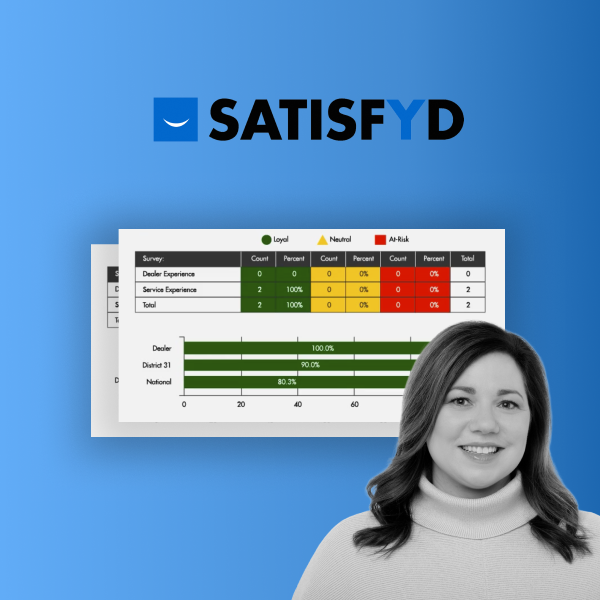Let's start with the core reasons companies look outside their organization for the shipping process in the first place:
- From a shipper's perspective, 3PL offers a level of expertise and a core competence that they don't have.
- A third party also offers attractive economies of scale, so they can negotiate low rates that a manufacturer might not be able to achieve on their own.
- Lastly, a 3PL is expected to offer an innovative solution to the status quo.
But what does this mean exactly in terms of logistics?
When it comes to supply chain management, it's not about re-inventing the wheel. It's about collaboratively creating better or more effective products, processes, services, technologies, or ideas from shop floor to the door step of your customers.
Innovation means anything and everything from reducing working capital to reducing transit times, and displaying a higher level of visibility into the process. In order to achieve any of this, there must be a process of collecting data, understanding it, and transforming it into actionable solutions. Indeed, increased access to an ocean of data -- and the tools that allow you to analyze and understand it -- is one of the strongest and fastest factors driving innovative new ways to approach supply chain management today.
Innovating with BI
And how do you achieve all of this? The answer, put simply: a data discovery process with BI and Analytics.
BI and Analytics give insight into the entire supply chain. It starts at the moment the supply chain is activated, compiling information related to the order including number of items, estimated shipping requirements, billing details, and so on. From there, an information flow starts as the order is fulfilled to the correct customer, at the correct time, in the correct quantities, and with the correct specifications.
Once an order has been fulfilled, it's a prime opportunity to extract valuable information and aggregate it with the hundreds or thousands of other orders performed over time. This data crunching process is a great way to understand the market demand and expectations. It also enables better planning and higher levels of order fulfillment and compliance.
There are a number of KPIs that should be regularly monitored to ensure overall health of the shipment process, find problems you didn't know existed, and innovate the process for optimal performance. These KPIs can all be applied at upstream and downstream ends of a supply chain. That is, they can be used to measure the performance of your own organization relative to your customers, but also as a way to measure how well your own suppliers are meeting your needs.
1. On time in full delivery
I emphasize "in full" to discourage shipping on time with less than the agreed order quantity in order to avoid penalties for lateness. Unless the entire order arrives on time, it should be regarded as late. An acceptable overall average may hide problem areas that will only be revealed through the kind of deep analysis that can be time consuming to do manually. Business Intelligence gives comprehensive insight into exactly this kind of data.
2. Average dates late
Measuring the average days orders are delivered late can help an organization understand the consequences late deliveries have in regard to customers. There is, after all, a vast difference between a delivery that's a day late and one that's a month late. Get the full picture on how many days on average were spent in the factory, in the warehouse, and en route to the customer.
3. Rate of returns due to shipment damage or shipment error
This KPI shifts the focus to the quality of the delivery: Does it actually contain what the customer ordered? Did the delivery arrive in the same condition as when it left the factory or was it damaged along the way? The quality and timeliness of the delivery are intimately connected, since a truly on-time delivery is not possible if the wrong item is delivered or the item is damaged. If the customer does not receive a correct item, it will have to be returned by the customer who must then wait for the correct item to be shipped.
4. Order picking accuracy
Delays and shipment errors can happen at any step in the process between the time an item leaves the factory and reaches the customer. The earlier the organization is able to catch errors, the smaller their downstream impact will be. The picking process is often the key to ensuring that the right product reaches the customer.
Order picking errors also entail a loss of efficiency in the warehouse, since the picker will have to spend time returning the wrong product and picking the correct one instead. In order to accurately measure order picking accuracy and catch errors, the organization must have some way of verifying that the picked item corresponds to the order before it leaves the warehouse. If this verification is recorded electronically, the data can be inputted into a Business Intelligence system to provide a real-time view of picking accuracy in the warehouse.
Only by precisely monitoring what you're doing will you have the ability to know how to do it better. In a world in which businesses must innovate or die, you need the right tools in your tool belt to make this process easy, seamless, and fast. The right business intelligence solution will monitor your KPIs 24 hours a day, seven days a week, and alert you when numbers deviate from the norm.
Have full insight into your supply chain and see exactly where and how you can reduce things such as transit times and capital spent. By mastering these four pillars of the supply chain process, you become a master of the supply chain.




